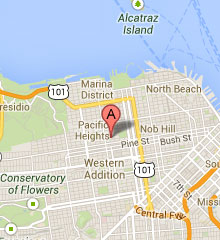Preeclampsia is a condition that occurs during pregnancy. This complication usually occurs late in pregnancy (after 20 weeks), but it can also happen earlier or after childbirth. Most people diagnosed with preeclampsia are able to deliver healthy babies and fully recover. However, if left untreated, preeclampsia can lead to serious complications that put both mother and baby at risk. The most effective treatment is delivering the baby; symptoms usually improve shortly after birth.
Preeclampsia Symptoms
The most common symptom of preeclampsia is abnormally high blood pressure. However, having high blood pressure doesn’t necessarily mean you are at risk. Other signs and symptoms include the following:
- Excess protein in your urine or other signs of kidney issues
- Blurred vision or loss of vision
- Light sensitivity
- Severe headaches
- Upper abdominal pain
- Nausea or vomiting
- Decreased urination
- Changes in mental state
- Trouble breathing, caused by fluid in the lungs
Preeclampsia symptoms such as swelling, weight gain, nausea, and aches also occur in healthy pregnancies, so it can often be difficult to decipher whether symptoms are normal or indicative of a health problem. If your symptoms worsen or pain increases, you should contact your doctor.
What Causes Preeclampsia?
There are many possible contributing factors to preeclampsia, many of which are genetic and out of your control. Doctors are still searching for the root cause of preeclampsia, but many believe it starts in the placenta. Early in pregnancy, as the placenta develops, new blood vessels bring blood to and from the new organ. For women with preeclampsia, these blood vessels do not properly develop, which hinders hormonal signaling and limits the amount of blood the placenta can receive.
Some doctors also believe that a poor diet can be a contributing factor, as well as poor blood circulation to the uterus. Other risk factors include:
- Race (Black women, in particular, have a higher chance of developing preeclampsia)
- Age (teenagers and women over the age of 35)
- Obesity
- First-time pregnancy
- Family history, especially if your mother or sister had preeclampsia
- Preexisting conditions such as diabetes, high blood pressure, migraines, kidney disease, or lupus
- In vitro fertilization (IVF)
- Carrying more than one baby
Complications of Preeclampsia
If preeclampsia progresses without treatment, your pregnancy can quickly become high risk. High-risk pregnancies can be monitored by a perinatologist (a high-risk pregnancy subspecialist), who can help plan out the best course of action during your pregnancy. Depending on the severity of your preeclampsia and how early it develops in your pregnancy, the risks for you and your baby vary in seriousness, as follows:
- Fetal growth restriction: Preeclampsia can prevent blood flow to the placenta. This can lead to slow growth or low birth weight, known as fetal growth restriction.
- Preterm birth: Preeclampsia contributes to 15% of all premature births in the US. If you have a severe case, your doctor may recommend delivering the baby early.
- Placental abruption: Preeclampsia increases your risk of placental abruption, a condition in which the placenta separates from the inner wall of your uterus before delivery. Severe abruption can cause heavy bleeding, which can be life-threatening and even lead to stillbirth.
- HELLP syndrome: HELLP stands for hemolysis (the destruction of red blood cells), elevated liver enzymes, and low platelet count. This severe form of preeclampsia is a medical emergency. Call 911 if you experience blurred vision, chest or stomach pain, extreme fatigue, or bleeding from your gums or nose.
Once you become pregnant, be mindful of your health and well-being. Consistent prenatal care and regular visits to your doctor can help you and your baby remain safe and healthy. To learn more about preeclampsia treatment in the San Francisco Bay area, contact Pacific Gynecology & Obstetrics Medical Group today!


